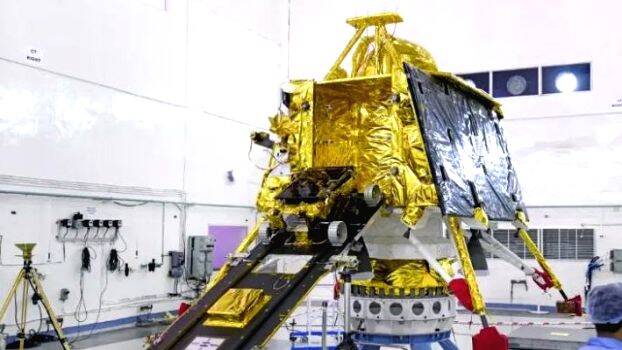

Fifteen years ago, India launched a lunar mission with the intention of writing a new chapter in the history of the field of space research. A few more days are enough to reach the dream of landing a vehicle on the moon. Chandrayaan-3, which was launched from Sriharikota on Friday afternoon, is expected to land on the moon on August 23 or 24. Chandrayaan will be launched on the lunar surface by a completely indigenously designed and developed rocket. The country's excellence in rocket technology has already been recognized by the world. By landing a probe on the moon, India will become the fourth country to achieve this technological capability. America, Russia, and China had already achieved this long ago. Chandrayaan-3 mission has another special feature. India is going to be the first country to land an experimental vehicle on the South Pole of the Moon. It will be an asset to India in space exploration in the future.
From carrying small rockets strapped to the back of a bicycle for launch to the launch of Chandrayaan, our amazing achievements in space research are many! It is also a great achievement for the team of thousands of talented scientists and technologists. India will also be the country to land a probe on the moon at the lowest cost. The cost of Chandrayaan-3 is 615 crores. If an expensive and powerful rocket was used, the probe could have reached the moon in a lesser number of days, but the cost would have been much higher.
The third mission was devised by incorporating lessons from the failure of the second lunar mission that shook the country. Chandrayaan 2 had reached the lunar surface and launched the rover to the lunar surface. Unfortunately, the mission failed when the lander crashed. The timing of the launch was set only after it was completely ensured that the equipment installed in Chandrayaan-3 would work properly without any errors. The aim is to slowly bring the lander down to the lunar surface from Chandrayaan, which will come within 100 kilometers radius of the moon. The rover inside the lander will be released on the lunar surface to conduct experimental observations and transmit data. In the second mission, everything went wrong because the landing was rushed. The mission has been shaped this time by fixing all such flaws. Only by August 24 can the scientific world of the country can sleep peacefully. The whole country is anxiously waiting for that moment.
The progress of the Gaganyaan mission to land man on moon depends on the success of this lunar mission. There are indications that a modified version of the LVM-3 rocket used to launch Chandrayaan-3 will be used for the Gaganyaan mission as well. This rocket has been used for all seven launches conducted by India so far. In the launch of Chandrayaan 3, several Malayalee science and technology talents including ISRO Chairman S Somnath played an invaluable and proud role.
A good share of this achievement belongs to Kerala. Therefore, the news from Sriharikota is something that brings joy to Malayalees as well.